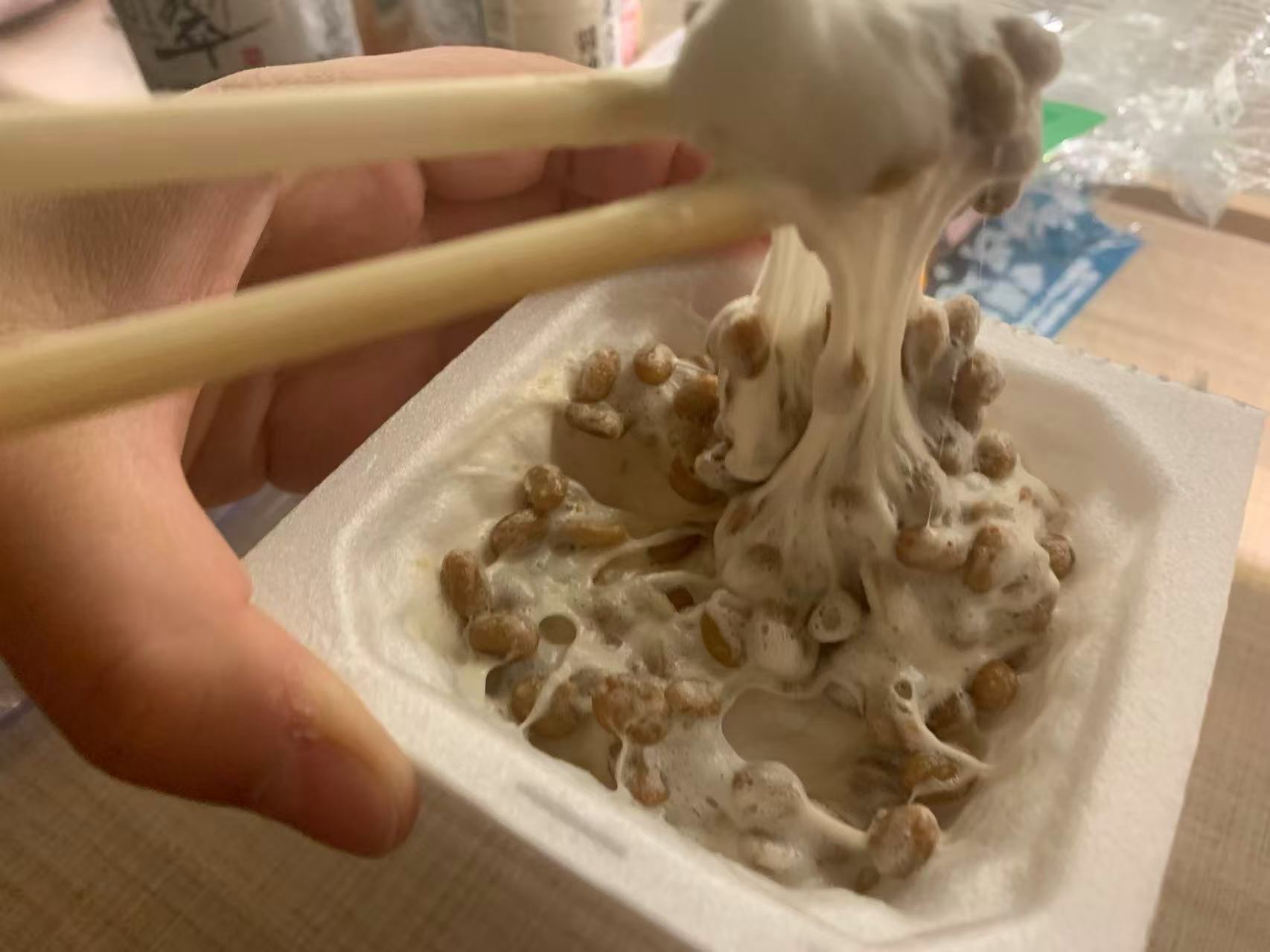History of Natto
Natto, Japan’s sticky fermented soybean dish, has a long history. It likely started over 1,000 years ago, possibly in the Yayoi period (300 BC–300 AD). Legend says it was discovered by accident when cooked soybeans wrapped in rice straw fermented naturally. The straw had bacteria called Bacillus subtilis, which turned the beans into natto. By the Edo period (1603–1868), it became a popular food, especially in eastern Japan. People loved it for its low price and health benefits. Today, natto is made in factories with controlled bacteria, but it’s still a beloved, healthy dish in Japan.
Natto is Delicious! 🤩
Some people argue natto is too sticky and too slimy for them, but I really like it (just like some people like durian and some people hate it). In my opinion, the combination of stickiness, mustard flavour, and soy flavour is splendid.
Its colour is light brown, with shiny beans in sticky, stretchy strings like a spider’s web. The smell is strong, with the savory scent of soy sauce hitting you in the face. But after you taste it, the strongest scent is the spicy mustard. Stir it, and gooey strings grow long, feeling soft and chewy.
Also, natto has protein and good bacteria for health. It is good for your digestive system.
How to Choose (and eat)
Natto is basically everywhere in Japan. Here’s a picture I took at a local supermarket in Tokyo.😋

Natto is divided by the size of its beans, the stickiness (threadiness) of natto, and its flavour. I personally recommend choosing the smallest possible bean size, the stickiest possible texture, and flavouring with natto soy sauce plus Japanese mustard. Here is a photo of a kind of natto I found in Japan that is really sticky.

The right way to eat natto (I think) is as the following steps show:
- Open the pack (carefully, to avoid sticky fingers!)
- Mix in the included soy sauce and mustard packets.
- Stir vigorously—the more you stir, the better the texture.
- You can decide whether to eat it plainly or perhaps eat it with sushi, toast, rice, noodles, or miso soup (according to online materials).
Some Tips…
I have tried putting natto on rice before. However, I do not like the taste after it is completely mixed (the flavour is weaker).
I have also tried mixing natto with an aseptic egg and rice together. I really don’t recommend doing this (especially mixing it completely), because it’s more like porridge after mixing.
I have also tried mixing natto with…vinegar…yeah, I actually did that💀. My suggestion is for your sake do NOT try it.

POGGGGGGGG we r all Natto lovers. Bad for the ones who ignore it just because of the smell ^ ^🔪
Yaaaaaaaaaaaaaaaaa ^ ^
This is interesting, and a completely different experience to my natto experience.
I’d recommend making this image the ‘featured image’ for this post so it stands out better in the listings. I reckon you’ll get a few more reads – not everybody knows what natto is.
the ‘featured image’ for this post so it stands out better in the listings. I reckon you’ll get a few more reads – not everybody knows what natto is.
Good idea👍👍
Am I the only one who thinks Natto tastes like nothing? 🫣
I mean it does have a slimy, sticky texture, but I feel like it’s tasteless…?
Yes, that is what the natto I had was like. I didn’t get any mustard flavour, just a sort of icky unpleasantness really.
Try adding some mustard and soy sauce, the taste will be much better👍👍